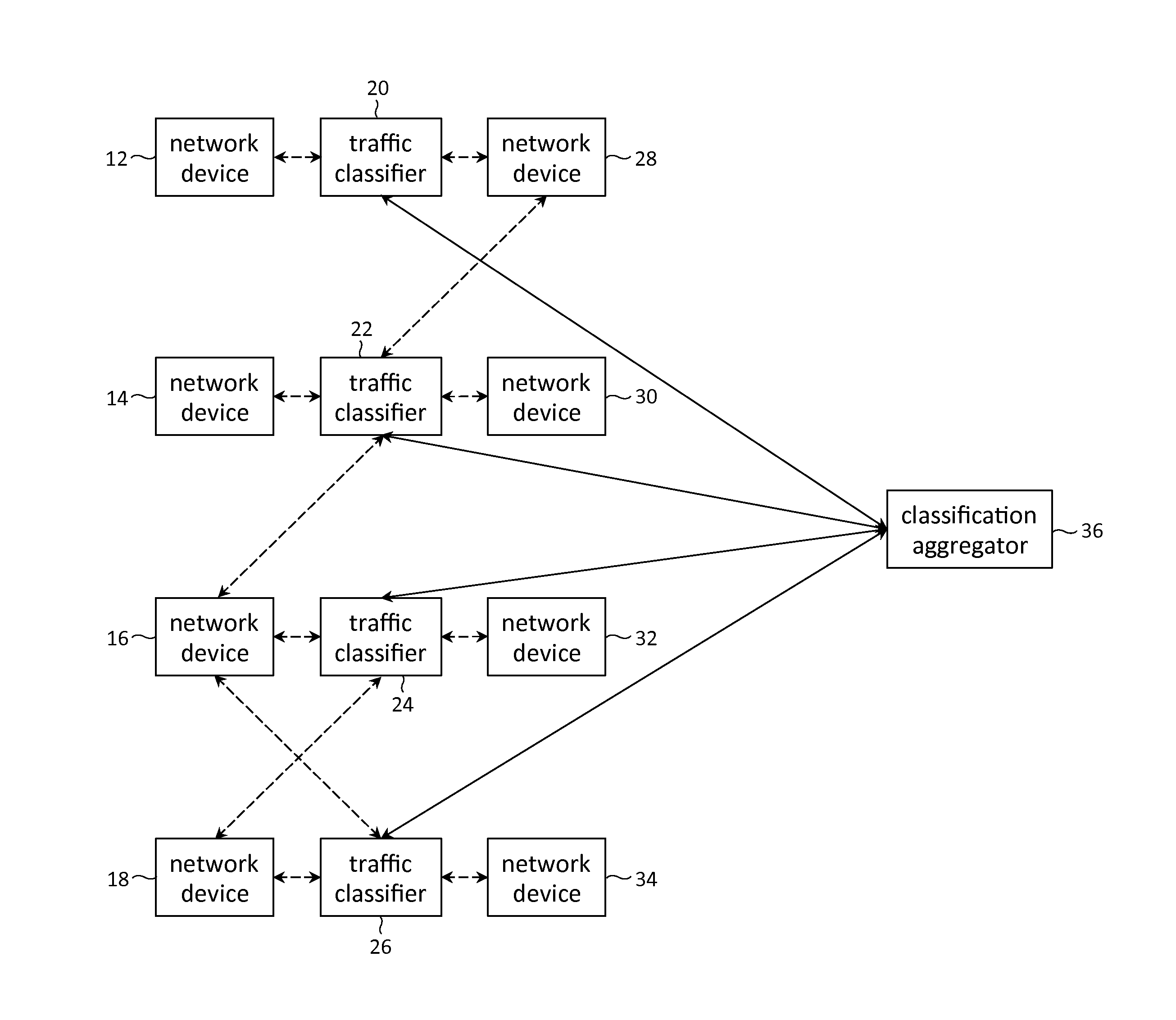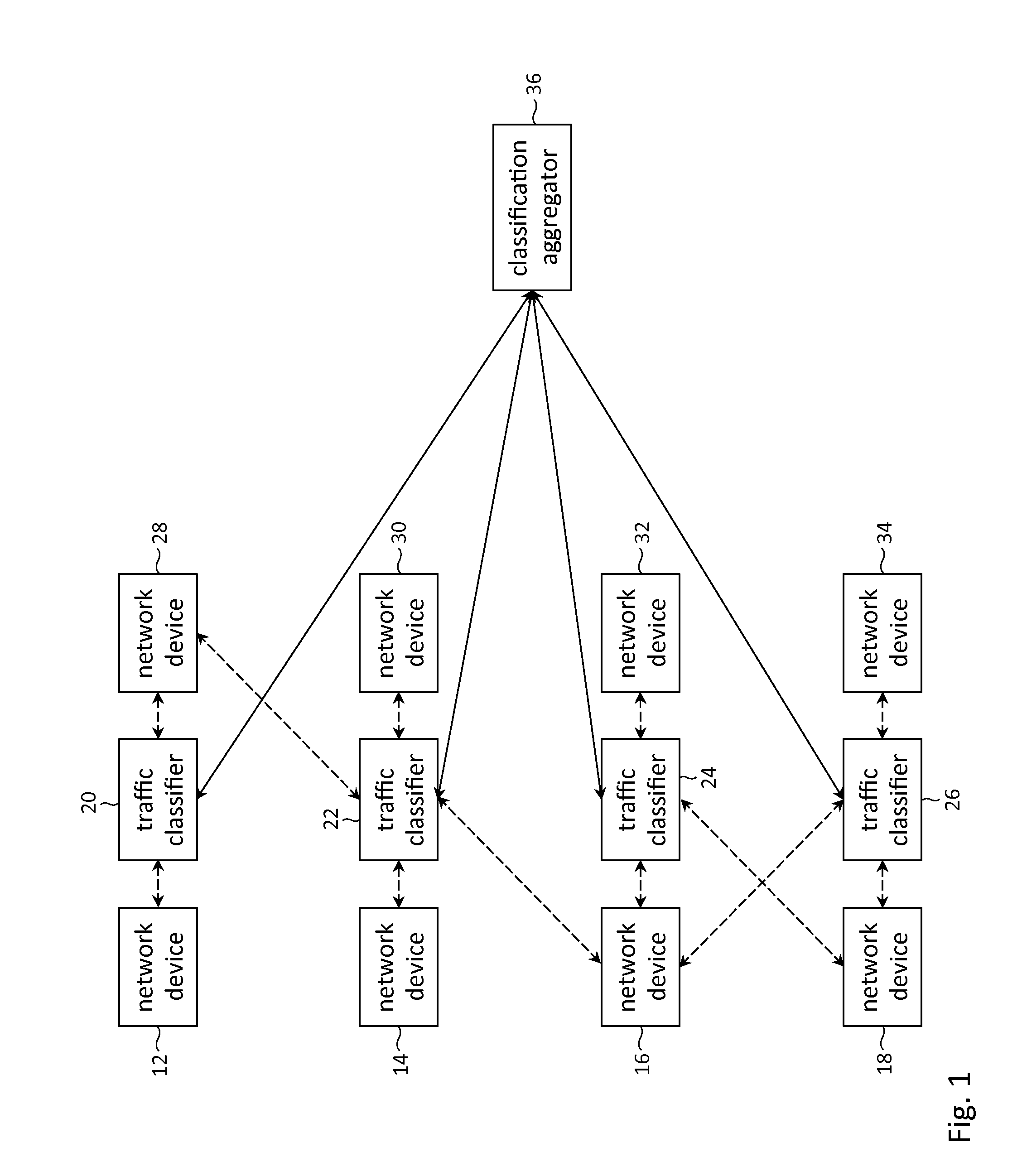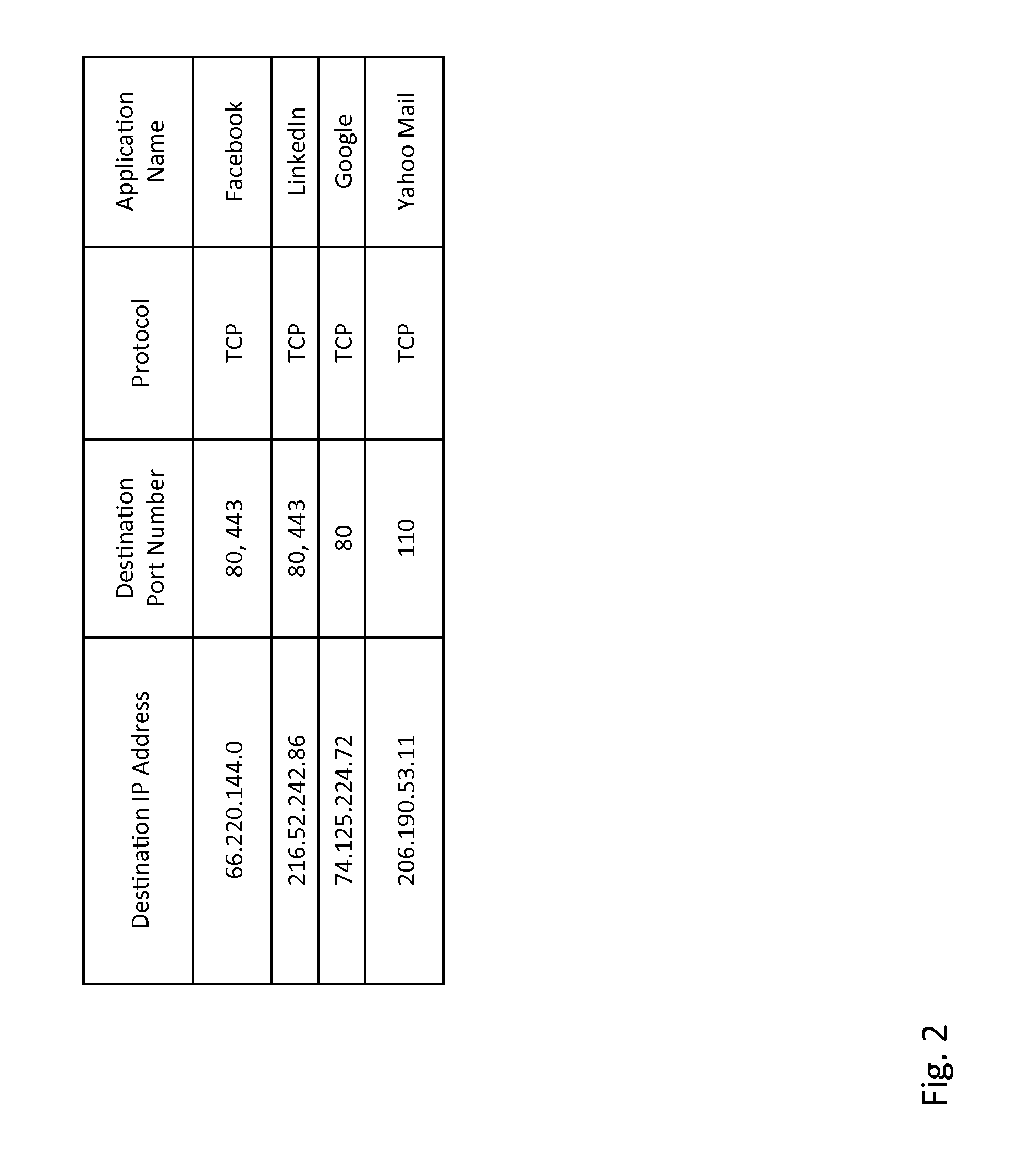Collaborative application classification
a technology of application classification and collaboration, applied in the field of collaborative application classification, can solve the problems of inefficiency present in such prior approaches, and achieve the effect of increasing the efficiency and scalability of network traffic classification
- Summary
- Abstract
- Description
- Claims
- Application Information
AI Technical Summary
Benefits of technology
Problems solved by technology
Method used
Image
Examples
Embodiment Construction
[0019]In the following detailed description of the preferred embodiments, reference is made to the accompanying drawings that form a part hereof, and in which are shown by way of illustration specific embodiments in which the invention may be practiced. It is understood that other embodiments may be utilized and structural changes may be made without departing from the scope of the present invention. Where possible, like steps or similar structure are labeled with identical reference numerals for clarity.
[0020]FIG. 1 depicts a system, according to one embodiment of the invention, in which a collection of network devices (12, 14, 16, 18, 28, 30, 32 and 34) are interfaced with one another via a collection of traffic classifiers (20, 22, 24 and 26) and the collection of traffic classifiers (20, 22, 24 and 26) are in turn interfaced with one another via a classification aggregator 36. For clarity, the former connections (between network devices and traffic classifiers) are shown in dash...
PUM
 Login to View More
Login to View More Abstract
Description
Claims
Application Information
 Login to View More
Login to View More - R&D
- Intellectual Property
- Life Sciences
- Materials
- Tech Scout
- Unparalleled Data Quality
- Higher Quality Content
- 60% Fewer Hallucinations
Browse by: Latest US Patents, China's latest patents, Technical Efficacy Thesaurus, Application Domain, Technology Topic, Popular Technical Reports.
© 2025 PatSnap. All rights reserved.Legal|Privacy policy|Modern Slavery Act Transparency Statement|Sitemap|About US| Contact US: help@patsnap.com



